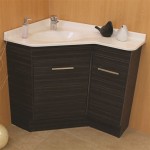How to Install Flooring in a Bathroom
Installing flooring in a bathroom is a project that can significantly enhance the look and feel of the space. It requires careful planning and execution to ensure both aesthetic appeal and long-term durability. This article will provide a comprehensive guide to installing bathroom flooring, covering various aspects from material selection to installation techniques.
1. Choosing the Right Bathroom Flooring
The first step is to select the right flooring material for your bathroom. This decision involves considering factors such as budget, desired aesthetics, and the level of foot traffic the bathroom receives. Here are some popular bathroom flooring options:
a. Ceramic Tile:
Ceramic tile is a classic choice for bathroom flooring due to its durability, water resistance, and wide range of styles. It comes in various sizes, colors, and patterns, allowing for creative design possibilities. Ceramic tile is relatively easy to clean and maintain, making it a practical option for high-traffic areas.
b. Porcelain Tile:
Porcelain tile is a more durable and dense type of ceramic tile, often preferred for its superior water resistance and scratch resistance. It is available in various finishes, including matte, gloss, and textured options, adding to its versatility.
c. Vinyl Plank:
Vinyl plank flooring has gained popularity for its affordability, water resistance, and ease of installation. It simulates the look of natural wood or stone without the high cost or maintenance requirements. Vinyl plank is also a good option for areas with uneven subfloors.
d. Natural Stone:
Natural stone, such as marble, granite, or slate, adds a touch of elegance and luxury to bathrooms. Although this material is highly durable and water-resistant, it is also the most expensive option. Regular sealing is required to maintain its beauty and protect it from stains.
2. Preparing the Subfloor
A solid and level subfloor is crucial for a successful flooring installation. Before installing the new flooring, it is essential to prepare the existing subfloor by addressing any imperfections or damage. This involves:
a. Removing Existing Flooring:
If there is existing flooring in the bathroom, it needs to be removed. This involves carefully removing the old flooring material, including tiles, vinyl, or wood. It is crucial to ensure that all remnants of the old flooring are removed, leaving a clean and smooth surface.
b. Leveling the Subfloor:
Once the old flooring is removed, inspect the subfloor for any uneven spots, cracks, or gaps. If necessary, use a leveling compound or self-leveling cement to create a smooth and level surface. This process is essential to ensure that the new flooring lays flat and securely.
c. Installing a Moisture Barrier:
Installing a moisture barrier is crucial in bathrooms to prevent water damage and protect the subfloor. A moisture barrier can be a plastic sheet, a moisture-resistant membrane, or a vapor retarder. It is usually installed over the subfloor before laying the new flooring.
3. Installing the Bathroom Flooring
The actual installation process will vary depending on the chosen flooring material. However, some general principles apply to all types of bathroom flooring:
a. Tile Installation:
For tile installations, begin by applying thin-set mortar to the subfloor using a notched trowel. Place the tiles on the mortar and use a level to ensure they are straight and flush. After installing the tiles, use grout to fill the gaps between them. Finally, seal the grout to prevent water penetration and staining.
b. Vinyl Plank Installation:
Vinyl plank flooring is often installed using a click-and-lock system. This method involves interlocking the planks together, creating a seamless surface. Ensure that the planks are installed according to the manufacturer's instructions, paying attention to spacing and expansion gaps around the perimeter of the room.
c. Natural Stone Installation:
Natural stone flooring is typically installed using a thin-set mortar and a leveling system. It is important to use a setting bed that is compatible with the stone type. After installation, seal the stone to protect it from stains and moisture.
4. Completing the Bathroom Flooring Installation
After installing the new flooring, several steps can be taken to complete the project:
a. Caulking:
Caulk around the perimeter of the room, as well as around any fixtures, to create a waterproof seal and prevent water from seeping under the flooring.
b. Thresholds:
If the bathroom has a doorway, install a threshold to ensure a smooth transition between the bathroom flooring and the flooring in the adjacent room.
c. Clean-Up:
Clean up any excess mortar, grout, or dust from the flooring and surrounding areas. Allow the flooring to cure completely before using the bathroom.
Installing bathroom flooring can be a challenging project, but with careful planning and execution, it can be a rewarding experience. By following the steps outlined in this article, you can create a beautiful and durable bathroom floor that will enhance the overall look and feel of the space.

How To Install Vinyl Plank Flooring In A Bathroom Fixthisbuildthat

How To Install Vinyl Plank Flooring In A Bathroom Fixthisbuildthat

How To Install Vinyl Plank Flooring Into A Bathroom

How To Install Vinyl Plank Flooring In A Bathroom

How To Install Vinyl Plank Flooring In A Bathroom Fixthisbuildthat

How To Install Sheet Vinyl Floor Decor Adventures

How To Install Vinyl Sheet Flooring A Erfly House

Laying Floor Tiles In A Small Bathroom Houseful Of Handmade

How To Fit Wood Flooring In Bathrooms And Beyond Blog

How To Install Vinyl Plank Flooring In A Bathroom Fixthisbuildthat






